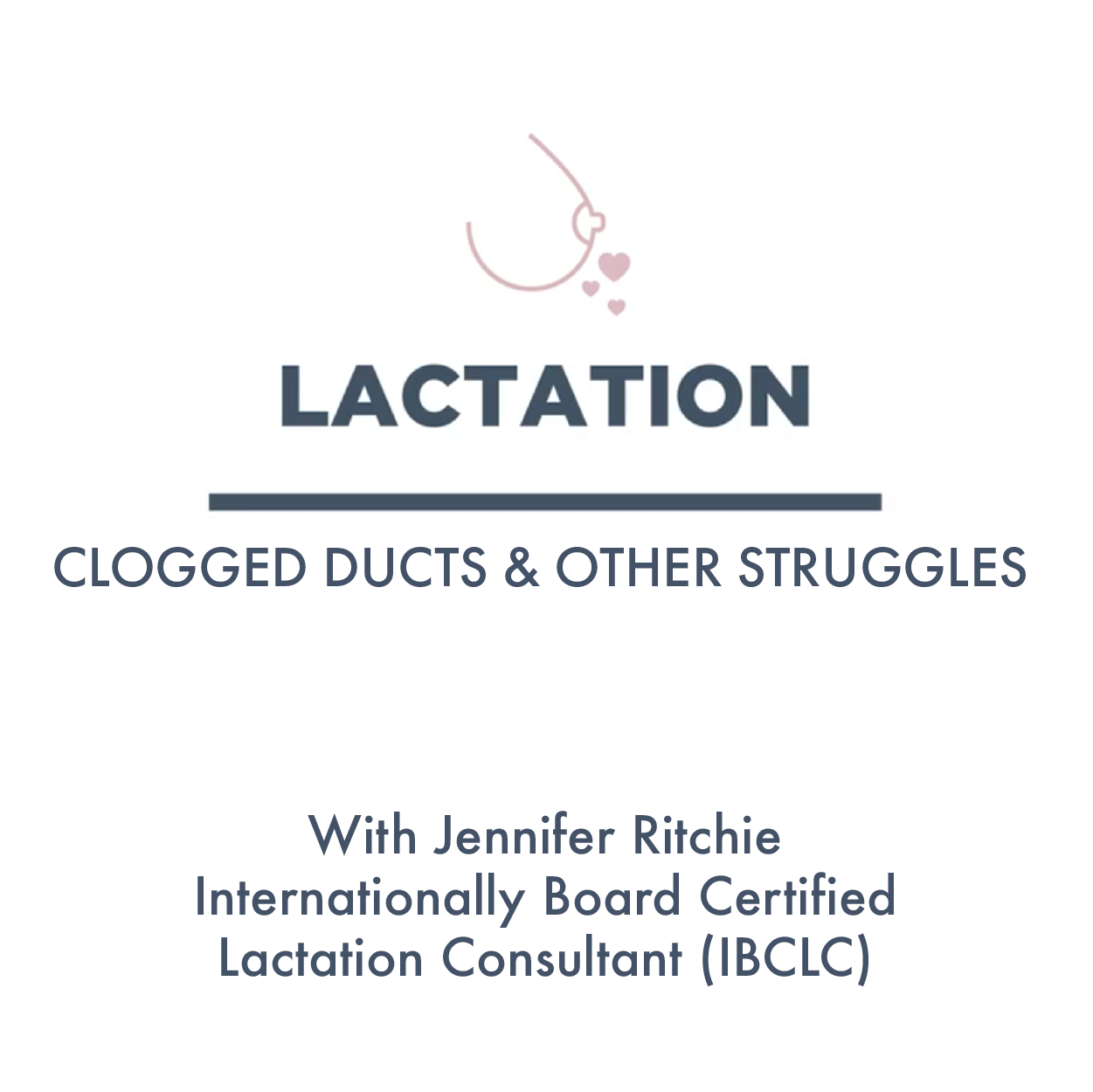PART ONE of a Conversation with Dr. Amna Husain, MD & IBCLC and Callan, Editor

Dr. Amna Husain is a Board-Certified Pediatrician and an Internationally Board-Certified Lactation Consultant (IBCLC) who owns a concierge pediatric practice.
In part one of our interview series, she and Motherhood Editor Callan, who was nursing her 15-month-old daughter, discuss Dr. Amna’s top breastfeeding advice, identifying and correcting supply issues, clogged ducts & more.
Callan: So I was really curious, why did you decide to become a certified lactation consultant in addition to being a pediatrician?
Dr. Amna: Yeah, so that's a good question. Surprisingly, we do actually have quite a bit of overlap with breastfeeding medicine and the three most common medical fields that probably go into lactation consulting as well are pediatrics, OBGYN and occasionally family medicine doctors. And essentially, it's really worthwhile because with new mothers, many of the most common questions I address are breastfeeding. Once I completed my pediatric training, I actually thought about it. And one of my favorite things to discuss with parents was breastfeeding. The physiology of it, the risks, the benefits that parents don't even know about. Especially when it comes to a mom maybe beginning a medication, if she should take it or not. I think there's a lot of misinformation out there. So why not kind of get all your information from one source? Especially I think with pediatrics, I bring a lot of scientific evidence-based medicine to the table. And with lactation consulting, I feel sometimes parents are a little bit more open, especially mothers about their goals and what they are trying to get out of breastfeeding. So, with the two melded together, I really find that it's a very open, personable dynamic between the mother of the patient and me as being the pediatrician, for the baby, but also being an advocate for the mother as a lactation consultant.
Callan: I love that because I have a 15-month-old and I felt like there's sometimes a gap in those early stages. The baby has a doctor, you have a doctor, and sometimes they're not on the same page. I wanted like a “new mom doctor" that takes care of the whole unit.
Dr. Amna: Right! and sometimes I find that pediatricians may get the rap of: "Just feed the baby. It's really not a big deal." And sometimes lactation consultants get the rap that you must breastfeed at all costs. So, this kind of allows like a nice melding. And I want families and mothers to know that I'm really not pro or against any particular thing as long as it's safe for you and the baby.
Callan: Love that. So, going into breastfeeding a little bit more. What is your number one piece of advice you give to new moms who are breastfeeding for the first time?
Dr. Amna: If I have a mother in front of me that's expecting still, we actually start the breastfeeding discussion early because I don't want moms to be hit the first day after delivery or the day of delivery with so many questions. So, we talk about things that they can do at home to become comfortable with hand expressing. But my number one tip, and I always go back to this, is I know breastfeeding sounds like a verb and a noun, but I really like to think of breastfeeding as a relationship. This is completely a relationship between you and the baby. It doesn't have to be a verb. It can be whatever you want it to be. So even if you choose to breastfeed for just the first morning feed or maybe you only nurse your baby to sleep and they are formula fed during the day, that's nobody's business except yours and the baby's. So breastfeeding is a relationship first and foremost. Now, if you find that relationship to be fulfilling to you and you want to keep nurturing it and going on, then that's perfect. But sometimes it's OK to say that that relationship is really putting a strain on you. So that's why I think it's really important to define it as a relationship first and foremost. And there's lots of moving pieces. Most importantly, you and the baby are the two most important factors in this relationship. And everything else is just background noise.
Callan: So what can cause supply issues? If your baby isn't gaining weight and you figure out it's probably a supply issue, why does that happen?
Dr. Amna: So first thing, just like I said, we assessed latch and transfer. Some moms are really surprised to hear that their baby isn't swallowing or transferring the milk. Or you can have what we call non-nutritive sucking, which is basically just sucking, but they're not swallowing. So, I like to be able to assess the baby. We can see their jaw move. We can see kind of them swallow. We can hear sometimes a clicking, which is actually them swallowing. We assess the latch, assess the transfer of milk. That's the first step. Now, the second step is actually something that sounds kind of backwards. It's actually supplementing. Supplementing can sometimes cause an issue with supply. And I know that sounds kind of backward, like I mentioned, but I like to think of breastfeeding as a supply and demand. So, the more you bring baby to your breast, the more milk is drained from your breast, the more your body sends a signal back to the hormones that produce milk that says: hey, we need more milk. The baby is demanding more. So, it's a supply and demand. And then your brain kicks in with hormones, like prolactin, and produces more milk. So that being said, think about the reverse. If we keep thinking our baby's hungry and we give them formula instead of more breast milk, or a bottle instead of putting them to the breast, then our breasts stay somewhat full. They send a signal back to the brain and the brain thinks we're doing OK. We're producing just enough milk for the baby. So that's really interesting. So sometimes having a bottle preference or supplementing can sometimes cause issues with supply at the breast.
Again, sometimes nipple shields can be really helpful for moms depending on if they have inverted nipples. Sometimes it can be really helpful if the babies do have smaller jaws and smaller mouths. I'm really careful, though, about when I give it out and if I give it out because sometimes it is well can interfere with the efficiency of milk transfer for the baby. So, it's just another barrier basically between the nipple and the baby's mouth. So sometimes a nipple shield being there means not enough milk being removed and we go right back to the supply and demand issue.
Another thing that sometimes can interfere and cause lower production depends on what mom's been thinking. So maybe she was told in the hospital, which is very, very common to hear, "15 to 20 minutes per side." Well, it kind of it doesn't work that way. When it comes to breast physiology, I like to tell parents to think of it as a meal. So, in the beginning, breast milk has a lot of carbohydrates and protein, which is great, right? You get a little bit of sugar for the baby through carbohydrates, the protein. But then at the very end, the milk has a little higher fat content. I like to think of it like heavy cream, a dessert, let's say. And that cream, that fat content, that we call the hindmilk, it's creamier and fattier and helps to cause a feeling of satiety, so the baby's feels full. So sometimes when babies don't get enough of the hindmilk, they may not really be feeling full all the time either. So sometimes you have to dispel some of those myths. And one thing I want to point out is, you know we've talked a lot about supply being low. And I think as women, we always think maybe the opposite would be better. Maybe I'd rather have an oversupply, so I never have to worry about it. But oversupply, you also do definitely run into issues. You run into issues like mastitis, other breast infections, clogged ducts. Sometimes if you have too much milk, you even run out of places to keep it. And too much foremilk as well, can cause the baby to be a little gassy. So, I just tell moms, don't worry about necessarily being an oversupplier either because then you run into another problem.
Callan: Can you talk more about foremilk and hindmilk and how the baby reacts to each? Because that was something I didn't know about, and then one day my baby's poop was foamy. And I read it could be a foremilk imbalance. And I was like, what does this even mean?
Dr. Amna: The same thing happened to me, and it was the total case of, you know too much. And so, I was sitting there calculating, what do I do? This is actually really interesting. The body is super smart when it comes to physiology and what you need. So, first things first, when the baby's hungry, the foremilk is what kind of comes out first and it's a little bit waterier. It's thinner in texture. It almost has like a blue gray appearance to it a little bit. And it's, again, what we call foremilk. It has more carbohydrates and more protein in it. And we're not talking gobs and gobs of protein or anything because that's not really something babies need high amounts of initially. They really just need the carbohydrates; they need the sugars. And you have probably more of the foremilk initially. Now, the more baby sits on one particular breast, you end up getting to the hindmilk, which is sort of at the very end of the feed, and that is creamier. Now, think of if you've ever pumped before and you put the milk in the fridge, and you see a slight separation and there's cream on the top of it. And you might be asking, what's wrong with my milk? It's actually hindmilk. It's not a large amount, but it is a little higher in fat. It's important that the baby really gets both, because just as I mentioned, with oversupply, sometimes baby is just getting the foremilk and sometimes that can be a high, high load of carbohydrates, a high load of lactose for the baby. And just like you mentioned, you can see sometimes green stools, frothy stools. You can sometimes see babies a little bit more gassy or uncomfortable. It's not always an exact science, but usually women who have foremilk/hindmilk imbalance, may have oversupply issues. So, what we try to do is regulate the breast milk production to the baby and what the baby needs. Maybe you're not feeding on both breasts. Maybe you're just feeding entirely for the full period on one breast. So that kind of helps you regulate to what the baby needs and can sometimes help if you're an overproducer.
Callan: So if you do have a supply issue, are there ways to increase it?
Dr. Amna: Yeah, I'm glad you asked this. So first thing again, think about what the issue really is. It's only a supply issue if the baby isn't gaining weight. So first thing we often go back to is—I know you hear this a lot as a mother – that you sleep when the baby sleeps, but stress can definitely negatively impact production. You'll see if you have a stressful day one day or you don't go to sleep or you're not drinking enough water. You may have a day where your nursing relationship also feels off because you might not be feeling like you're producing that much. So resting, eating, drinking, sleeping when you can, that all helps. Now, one thing I will say is don't force fluids on yourself. Don’t guzzle, guzzle, guzzle, guzzle water, but drink so that you're not thirsty. I tell moms when you're feeling thirsty at two a.m., you probably were behind in your water intake earlier during the day. So just drink to not feeling thirst and that's really helpful. The second thing is I'm particular about when I tell moms to pump because again, pumps aren't as good at extracting milk as babies are. But if you are feeling like you could possibly maybe have a supply issue and you want to increase it, not only bringing baby to breast, because again, going back to the supply/demand, your body will sense that there is a low supply and increase the need for milk. You could possibly try adding in what we call power pumping sessions in between. So let's say you fed baby and put them down and you're about to watch some TV or something or eat now and you can put on the pump for a little while and let your breasts feel a little extra stimulation so that, again, the supply/demand can kick in.
Some common foods that women like to eat, and they wonder if this can possibly increase their supply, are oatmeal and fenugreek. I'm going to bust a myth here. But there's really no evidence to say that oatmeal necessarily increases supply. Oatmeal does, however, contain iron, which is really important for mothers in general, especially because some of your vitamins are actually passing through your breast milk. So making sure that you're keeping up your iron, especially after pregnancy and then delivery is really important. Oatmeal actually can release hormones that allow you to feel a little bit more relaxed. And what can negatively impact breastfeeding: stress! So feeling a little bit more relaxed can help. My thought is, if you want to eat oatmeal and it helps, awesome. And it's a healthy meal too, that's one thing that we always try to tell moms is make sure you're eating healthy and taking care of yourself. So if you want to do it, awesome, I think we should go for it. And if you find that it's increasing your production, even better. Now, fenugreek is commonly thought to increase supply. But what most women don't know is you actually have to take a pretty large dose of it. So about 3500 milligrams a day, to the point that you actually smell a little bit like maple syrup. Not even a little bit, a lot a bit. So sometimes women that have been taking the fenugreek will tell me they feel like they smell sweaty. My sweat smells like maple syrup. And that's actually a sign that you're reaching therapeutic levels. Your sweat and your urine might smell like maple syrup, but that's actually the high doses that you have to take to really reach it. The caveat to fenugreek is that it's an herb. In can also cause you to feel a little extra gas and bloating and likewise cause the baby to feel a little bit more gas and bloating. So, if you have a fussy baby on your hand as well, it's kind of hard to say. But we busted two big myths there.
Now there are medications we can actually give as well. As I've mentioned, breastfeeding is a hormone driven process, so we can sort of manipulate the hormones that your breast milk production increases. Again, this would go back to more of the MDs or DOs, who are also lactation consultants that prescribe these, so regular lactation consultants wouldn't do this. They don't have prescribing privileges. If this is something you're concerned about, usually it's your family medicine doctor or your OB doctor who is prescribing this and they have some knowledge of breastfeeding medicine as well.
Callan: And then clogged ducts, why does that happen and how do you resolve them? And how do you know if you even have one?
Dr. Amna: Let’s start with pregnancy and what happens. Milk ducts actually increase during pregnancy and you begin to form what we call lactocytes or milk producing cells. You have increased blood flow to that area. And I'm sure you see during pregnancy that you have all these engorged veins. And it looks kind of freaky, but it's actually your body producing and getting prepared for milk production. We actually start forming colostrum in pregnancy. So that's why some women initially, right at the time of birth, like I have milk come in, that's actually the colostrum that your body's been working so hard on during pregnancy. Your actual milk might take somewhere to three to five days to come in if you're a first-time mom, maybe one to three if this is a subsequent pregnancy. So now we've talked about all these ducts that are branching in. Milk is an incredibly intricate branching system, the way it forms in the breast. So, there's going to be times where you might have a place in the breast where the milk isn't completely extracted well. That could be maybe you were laying on a side. Maybe the baby didn't completely finish a feed on one particular side. Maybe you have a tight-fitting bra that put pressure on a particular part of the breast. Many different reasons can really cause you to have a clogged duct. And a clogged duct is very different than mastitis.
Mastitis is actually an infection of the breast tissue. So, it's normal to feel some breast fullness. We have increased blood flow, milk production, lymphatic drainage in that area. That's normal to feel some breast fullness. But sometimes if you're not adequately transferring or removing that milk, it stays there, and it can actually become something that gets infected. The breast tissue itself can look red, it can look shiny, inflamed, a little tight or taut appearing just like we mentioned. You can have tenderness there. You might even feel a lump. And the lump might be if there's a clogged duct that really caused the milk to stay there and become inflamed and cause the mastitis. So that's to say you can have a clogged causes mastitis and that doesn't cause mastitis. Again, women can have fevers sometimes with it and flu like symptoms. And if you do, we recommend calling your OBGYN and they can actually prescribe medication for it. Usually it needs to be treated actually with an antibiotic for the mom so that we can treat the infection that's brewing.
Now, when women have a clogged duct, let's say, and they don't have mastitis, there are ways that you can kind of feed around it. So, one thing I tell moms is try dangle nursing. Now, this is depending on your comfort with the baby. So, let's say if your clogged duct is on your left breast and it's right up here in their top corner, you can possibly try nursing the baby as you're laying down next to the baby. Of course, you're likely wide awake and you're able to sort of put pressure and move that clog duct and move that milk plug downward so that you're allowing the baby to suck at the same time, provide that vacuum pressure. And you're also providing counterpressure against it. Another great time to do massage is actually in a shower. When you're feeling hot pressure from the water that's coming down from the faucet, you're also able to relax a little bit and you can kind of massage the duct out there. Sometimes if you are feeling a lot of tenderness and pain there, NSAIDs can help. Motrin can help actually, so let your doctor know. But usually that's just fine to take while you're breastfeeding. And those are some of the top things.
But there are ways that you can actually really prevent sort of getting a clog duct. One of them would be a well fit maternity bra. A lot of moms aren't aware that can actually cause you to have what we call minor breast trauma. Your breasts are so sensitive right after delivery and during the initial breastfeeding period that some small amounts of trauma can really hurt and cause your tissue to get inflamed in that area. Again, frequent nursing. So frequent milk removal will allow less milk to stay there and less chance of infection. Making sure you have an appropriate latch also helps. So even if you're frequently nursing the baby but the latch isn't great and the baby's not swallowing, then you're probably not having great milk transfer. So, having a consultation with the lactation consultant can really help.





